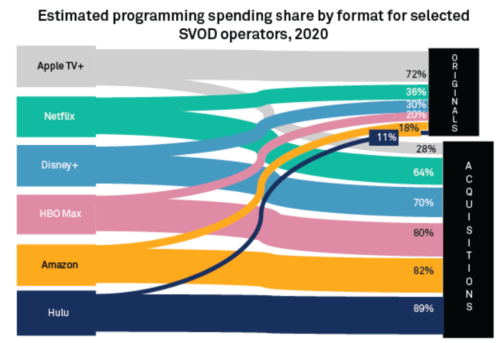Connections

RSG Media: AI, ML ‘Juicing the ROI’ for Content Libraries
Story Highlights
The more media companies launch new services and boost content creation, the more pressure they face to maximize the value of their libraries. That means increased use of artificial intelligence (AI) and machine learning (ML) technologies, to help reduce friction, increase revenues, and speed up time-to-market.
That’s according to a new white paper from RSG Media, which identified half-a-dozen pressure points for content companies that AI and ML are helping address.
The paper — “Buy, Sell or Hold: Using AI/Machine Learning to Juice the ROI on
Your Rights Investment Portfolio” — found that platform growth, the need for content, business evolution, complexified rights and merging libraries are all being helped with the application of AI and ML, in order to “manage these factors and maximize the value of content, by identifying what content rights are available for a particular opportunity, and layering on insight regarding the effective value of each avail to the programmer based on AI/ML-driven audience analytics,” the report reads.
“This information lets content owners and programmers programmatically select the right content at the right price point.”
By the end of 2020, there were more than 300 OTT services in just the U.S., up from fewer than 125 just six years earlier. With 105 million TV households — more than 80 percent of American homes — streaming and doing so at a 40 percent higher clip than a year ago, there’s no sign of in-home content consumption slowing down any time soon. And with the top 12 content companies in the country all spending at least $1 billion ($27.8 billion for No. 1 Disney) a year on original content, figuring out where and when to distribute has become of paramount importance.
 Finding that solution requires a programmatic approach, to increase the ROI in your investment, according to RSG’s report. That means detailing your inventory in terms of the current and likely value of each asset, understanding the behavior of your audience (and the audience of your competitors) and how they’ll respond to your content, and pinpointing the real value of each content right. AI and ML today can help do all of that, the report details.
Finding that solution requires a programmatic approach, to increase the ROI in your investment, according to RSG’s report. That means detailing your inventory in terms of the current and likely value of each asset, understanding the behavior of your audience (and the audience of your competitors) and how they’ll respond to your content, and pinpointing the real value of each content right. AI and ML today can help do all of that, the report details.
“The media and entertainment industry is growing more complex daily, and is moving towards greater, more programmatic, automation, while retaining person-to-person operations for the most premium content,” the report concludes. “Each of these scenarios [premium content sales, self-service market for non-premium content, and long-trail programmatic content sales] requires accurate data regarding what content is available, and how audiences are likely to respond to the content,” the report concludes.
“New tools are enabling content owners and programmers to quickly discern their avails inventory and the value of each asset to them and their content owners.”
To download the report, click here.









